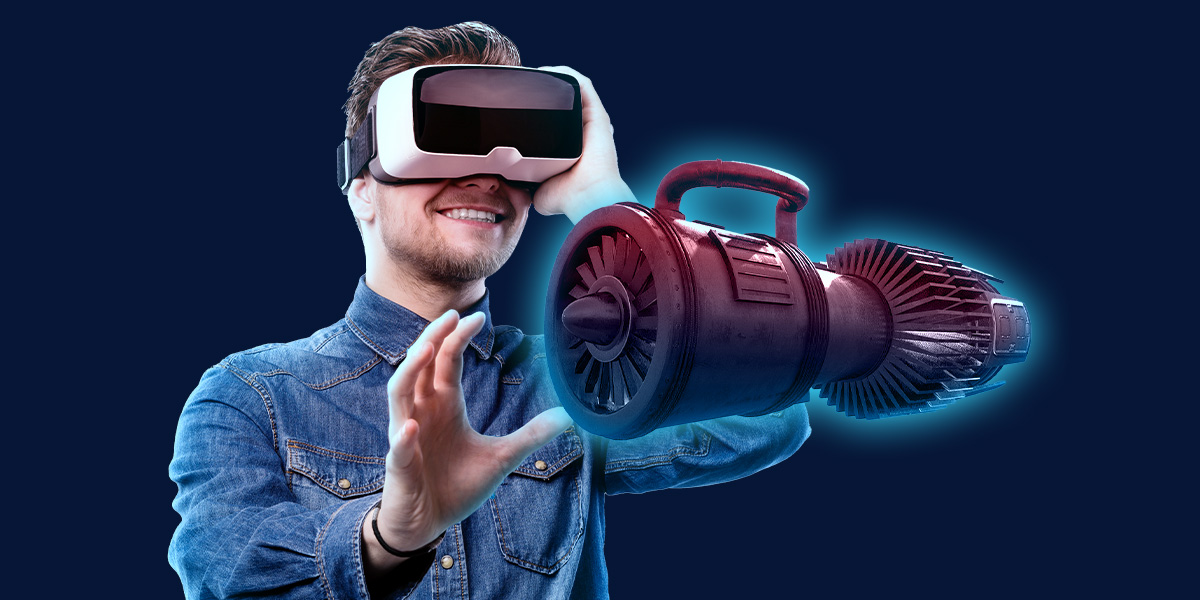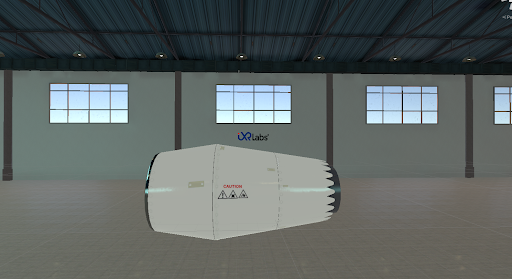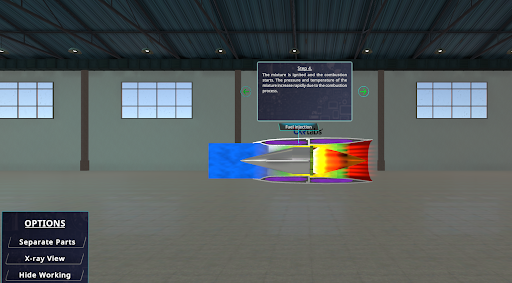5 Creative Ways to Teach Turbofan Jet Engine

Jet engines have revolutionized modern aviation and are at the core of most commercial aircraft. Within the realm of modern engineering marvels, turbofan jet engines stand as a testament to human ingenuity and technological progress, which is why the marvel of turbofan jet engines has captivated the imagination of engineering enthusiasts and aviation lovers alike.
For students pursuing careers in aerospace and mechanical engineering, comprehending the intricate workings of the powerful machines like Turbofan Jet Engine, Scramjet engine, Ramjet engine, Petrol engine, and Diesel engine is of utmost importance.
However, as advancements in technology continue to push boundaries, the significance of turbofan jet engines remains unparalleled.
Empowering aircraft and facilitating global transportation, it stands as an engineering marvel and a favorite among aerospace students.
However, educators often encounter challenges when introducing the principles of turbofan jet engines to their students.
To overcome these obstacles and ensure an effortless learning process, we have curated five creative and innovative ways to teach turbofan jet engines.
These approaches are designed to ignite curiosity, engage students, and foster a deeper understanding of this captivating technology.
Let's embark on an exploration of these methods together!
Explore Turbofan Jet Engines through Interactive Simulations
Introducing interactive models and simulations in the classroom can breathe life into the study of turbofan jet engines.
By utilizing virtual reality (VR) technology, students can explore a fully interactive turbofan Jet Engine 3D model. This immersive experience allows them to examine each component, understand its role, and witness how they work together to generate thrust.
Students can also participate in Turbofan Jet Engine simulations, adjusting throttle settings, analyzing engine performance, and gaining a practical understanding of various engine scenarios.
iXRLabs offers VR Machinery Module that allows students to explore a comprehensive breakdown of a jet engine's components.
The "Separate Part" feature allows users to examine individual machine components, while the "X-ray View" provides a visual representation of how these parts are interconnected and located within the system along with answe the query “how Jet Engines works?”
This interactive learning experience ensures students grasp the fundamentals of Turbofan Jet Engine working principles. Not only this, the VR industrial modules offers virtual industrial visit in a safe and controlled environment.
Engage and Energize Learning with Interactive Games and Activities
 "Engage and energize turbo fan jet engine learning in a virtual and safe environment with iXRlabs' virtual reality lab."
"Engage and energize turbo fan jet engine learning in a virtual and safe environment with iXRlabs' virtual reality lab."
Incorporating games and activities into the teaching approach can turn the study of turbofan jet engines into an engaging experience. For instance, organizing a team-based quiz or a scavenger hunt where students identify different engine components and their functions can make learning enjoyable and effective.
By making the learning process fun and interactive, students are more likely to retain the information and develop a deeper appreciation for the complexities of jet engines.
At iXRLabs, we understand the importance of interactive learning experiences, and that's why we offer quizzes for each module, including our VR Turbofan Jet Engine Module.
Each quiz question is carefully crafted to test students' knowledge of turbofan jet engine principles, components, and operations. By offering a mix of questions, we create a diverse and comprehensive assessment that challenges students to think critically and apply their understanding.
After answering each question, students receive instant feedback, including correct answers and explanations for incorrect choices. This real-time feedback allows students to identify areas where they need improvement and fosters a continuous learning process, thus, getting the best out of the VR engineering experience.
Enhancing Jet Engine Education in the Digital Age
Embracing technology is crucial in modern education, and integrating it into turbofan jet engine lessons can greatly enhance students' comprehension.
Virtual reality (VR) platforms can offer students an unprecedented level of immersion, allowing them to virtually dissect the engine, explore its interior, and understand how it operates.  Additionally, utilizing digital applications with interactive Turbofan Jet Engine 3D models can provide students with a clearer visual representation of complex concepts like airflow patterns and engine mechanics.
Additionally, utilizing digital applications with interactive Turbofan Jet Engine 3D models can provide students with a clearer visual representation of complex concepts like airflow patterns and engine mechanics.
Setting up VR labs is more beneficial for universities and colleges in order to teach engineering through modern technology.
VR Labs prepare students for the challenges of the future by providing advantages like enhanced learning experience, practical hands-on learning, access to rare and remote experiences, promoting collaboration and teamwork, equipping students with valuable digital literacy and technological skills, and more.
Inspiring Learners by Connecting to Career Prospects
Motivating students to learn about turbofan jet engines involves showcasing the real-world applications of this technology. Connect the topic to its potential impact on the aerospace industry, aviation, and global transportation.
By emphasizing the diverse career paths that are open to those with expertise in jet engine technology, students can understand the significance of their studies and how it can shape their future.
Connecting the Topic from Theory to Practice with Real-World Applications
To make the study of turbofan jet engines more relatable, provide students with real-world examples and case studies.
Showcase how these engines power commercial aircraft, enabling global travel and connecting people around the world. Introduce students to the various advancements in engine design that have contributed to increased efficiency and reduced environmental impact.
By grounding the topic in real-world applications, students can grasp the practical implications of their learning, important for Aircraft Maintenance Engineering.
Conclusion
Teaching turbofan jet engines using interactive models, simulations, and real-world applications can transform the learning experience for students.
By embracing technology and engaging teaching methods, educators can ignite curiosity and passion in their students for aerospace and mechanical engineering.
As students explore the inner workings of these powerful engines, they gain valuable insights into the field's potential and their role in shaping the future of aviation and transportation.
At iXRLabs, we believe that learning complex subjects like turbofan jet engines should be an immersive and enjoyable experience.
By incorporating VR modules into higher education curricula, we enable students to explore the mechanics of jet engines like never before.
Our machinery modules, which include "Separate Part," "X-ray View," and "Show Working" features, offer interactive and informative learning opportunities.
With iXRLabs' solution for VR in Electrical Engineering, Civil Engineering, and Mechanical Engineering, students can develop practical skills, deepen their understanding of the workings of turbofan jet engines, and prepare themselves for exciting careers in the aviation industry.




